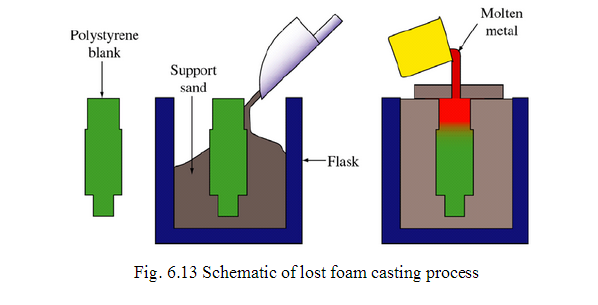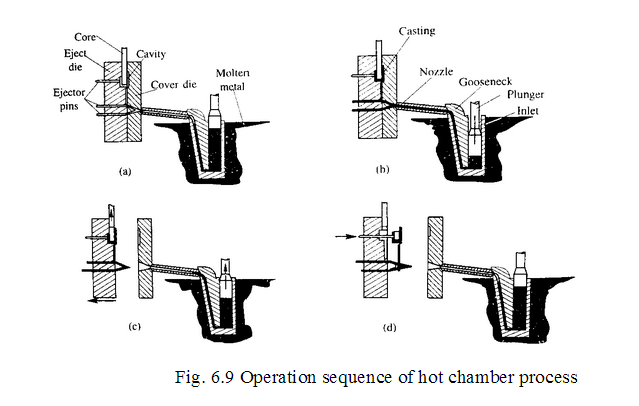Ceramic Mold Casting
Similar to plaster mold casting, China precision machining the pattern used in ceramic mold casting is made of plaster, plastic, wood, metal or rubber. A slurry of ceramic is poured over the pattern. It hardens rapidly to the consistency of rubber. This can be peeled of the pattern, reassembled as a mold. The volatiles are removed using a flame torch or in a low temperature oven. It is then baked in a furnace at about 1000 °C (1832 °F) yielding a ceramic mold, capable of high temperature pours. Additionally, the pour can take place while the mold is until hot.
Tolerances can be held to 0.4 %, surface finishes can be better than 2 - 4 μm (.075 - .15 μin). Add 0.3 mm (.012 in) for parting line tolerances. Wall thickness can be as small as 1.25 mm (.050 in), and the weights can range from 60 g (2oz) to a ton. Draft allowance of 1° is recommended.
This process is expensive, but can eliminate secondary machining operations. Typical parts made from this process include impellers made from stainless steel, bronze, complex cutting tools, plastic mold tooling.
Procedure:
Models made of clay, wood or plaster must be coated with 2 or 3 layers of thinned down orange shellac.
Step 1: First you must study the object from which you are to make the mold, to establish the Parting Line. Draw a line on the object with a dye-marking felt tip pen.
Step 2: Place the object on your Work Board so your parting line is somewhat parallel to your work surface. Proceed to Clay-Up with water base modeling clay around the object to your parting line, extend out for one inch from the widest points.
Step 3: When clay is all in place, smooth and leather hard, square off clay as shown. Using a soft brush, apply two thin coats of Orange Shellac over the object and the top surface of the clay parting line. After 15-20 minutes, apply talcum powder, dusting lightly.
Step 4: Apply Parting Agent with a soft brush covering the entire surface. Dry your brush and pick up all excess Parting Agent, leaving a very slick surface on the object and parting line clay.
Step 5: Prepare your casting boards, wiping each with Parting Agent on front surface and edges. Assemble as shown with "C" Clamps. With wooden tool, seal edges where clay parting line meets the insides of the board as shown.
Step 6: READY FOR CASTING. For the size of the object shown in these drawings and the apparent bulk of parting line around the model, we will use the following proportions: With your 1 gallon plastic jar, weigh out 1 1/2 lbs. of No.1 Pottery Plaster
Step 7: Let the plaster soak for 3-5 minutes, then mix with your Drill Motor Mixer. Mix for about 1 1/2 minutes, then pour over boxed pattern. Plaster should cover at least 1 inch over the highest point on the Model.
Step 8: After 20 minutes, take casting boards apart, scrape off top of plaster and bevel the edges slightly. Grasp opposite sides of the plaster/clay mold and gently twist to loosen clay from the work board as shown. Turn mold over and proceed to lift off clay from model and plaster half of the mold.
Step 9: If orange shellac transfers to plaster half, clean with alcohol. Clean all clay particles from the mold surface. Now is the time to carve Keys into the plaster parting line. You can make Keys several ways - round end of large spatula, a coin (nickel or quarter).
Step 10: Prepare your casting boards again, dust the model and parting line area with talcum, brush on parting agent as in Step 4. Assemble the boards as in Step 5 with "C" Clamps and repeat Steps 6 and 7 for casting the second half of the mold. Let the plaster set for 1/2 hour, remove the casting boards, scrape top of the mold, bevel the edge and corners.
Step 11: Now you are ready to open the mold. Scrape off any plaster that may have run down the side of the first half of the mold. Using a flat end screwdriver or a wooden wedge, insert it at the parting line; tap it gently with the hammer. As soon as the mold starts to part, turn the mold over and repeat the process. When the mold is loose, grasp each half and gently pry apart.
Step 12: The model will usually stay in half of the mold. At this point, how accurate you were with your parting line, what material your model was made of , and how hard or soft that material was, will dictate how easy or hard it will be to get the model out of the half plaster mold.
Step 13: If the model was made of clay, you can ease it out by using the screwdriver. But if you have to do any prying like a lever, place a flat piece of wood under your screwdriver so you won't chip the plaster mold. If your model is made of metal, glass or ceramic, you might have to use other means, such as air pressure or tapping all around the model with a rubber mallet. In some cases, you have chipped out the model thus destroying it. But keep in mind, that at this point the mold is the main object because a good, China precision machining usable mold can reproduce 50 to 150 objects.
Step 14: With both halves now clean of any particles, we now determine where to carve in your Pour Hole. It can be in one half or in both halves as shown. Bevel the outer edge of the parting line on both halves and bevel all outside edges of the mold. This keeps that edge from chipping.
Step 15: At this time, China precision machining check each half of the mold for any under-cuts that can be cut back. Let your mold dry out for 4 or 5 days depending on your weather conditions. NOW YOU HAVE A MOLD.














